State Policy Trends Shaping Patient Care in 2025
State-level policy work in health care is critically important, especially for patients with cancer. These policies have a direct impact on people’s lives, and their importance is only growing. Rose Gerber, MS, Advocacy Chat host and COA’s Director of Patient Advocacy and Education, and James Lee, COA’s Director of State and Policy, provide insights into what’s happening at the state level and how these changes can affect you.
https://www.youtube.com/watch?v=c7aEJ9wWtQw
Why State-Level Advocacy Matters in Cancer Care
Both the federal and state governments play crucial roles in health care. The federal government oversees national programs like Medicare and Tricare, and agencies like Health and Human Services (HHS) and the Centers for Medicare & Medicaid Services (CMS). These entities manage billions of dollars in spending and set rules for large-scale programs.
States, on the other hand, manage programs like Medicaid and the Children’s Health Insurance Program (CHIP). State departments of insurance and health decide the types of plans offered, the coverage provided, and how to address regional issues. This division of power means that a patient in one state can have a vastly different experience compared to a patient in another.
Imagine two patients with cancer living in different states. One might have quick access to the latest treatments and comprehensive support services. The other might face delays, high out-of-pocket costs, and limited options. This difference highlights why it’s so important to pay attention to what’s happening in your state.
State policies directly impact:
- How quickly you can get treatment
- How much you pay out-of-pocket
- Whether your care is personalized
Recent court rulings, such as Rutledge v. PCMA, have further emphasized the power of states to regulate health care. Other potential court cases could emerge based on legislation passed this year.
States can address a range of issues, including:
- Workforce shortages
- Insurance policies
- Who can treat you
- Drug costs (potentially thousands of dollars difference)
Key State Policy Trends Affecting Cancer Patients in 2025
What are some of the key areas where state policies are making a difference?
Affordability of Care: Reforming Pharmacy Benefit Managers (PBMs)
Pharmacy Benefit Managers (PBMs) are third-party companies hired by insurers to manage prescription drug benefits. If you have insurance – whether it’s Medicaid, Medicare, or private insurance – a PBM is managing your prescriptions. They decide which drugs are covered, negotiate prices, and determine what patients pay at the pharmacy counter.
In theory, PBMs are supposed to lower costs. In practice, they often make the system more complex and drive up costs. So, how are states working to reform PBMs?
Copay Accumulators and Maximizers
Copay accumulators and maximizers are business practices used by PBMs. These practices dictate that if a patient receives third-party assistance for a drug, that assistance may not count towards the patient’s deductible or out-of-pocket costs.
For example, if you need help paying for expensive medications and receive assistance from a church, school, or family, your insurer and PBM might say that the money doesn’t count towards your deductible. This makes it harder to reach your deductible and have your insurance cover the costs.
This practice burdens patients and can prevent them from seeking care. Cancer care is already emotionally and financially challenging. Policies like copay accumulators and maximizers only add to the burden.
Some states are addressing this issue. Texas, for example, previously banned copay accumulators and is now considering a bill to close the loophole on maximizers. Often, change happens incrementally. Some states address the issue in its entirety, while others take it piece by piece.
Rebate Pass-Through Policies
PBMs receive discounts (rebates) from drug manufacturers to include drugs on their formularies. States are now requiring PBMs to pass these rebates to patients at the point of sale, either fully or a large percentage (e.g., 80% to 100%).
The idea is that if PBMs are receiving discounted rates to make drugs more affordable, those savings should be passed on to the patients, not kept as profits.
Addressing Delays in Care: Step Therapy and Prior Authorization Reform
Delays in care can have serious consequences for cancer patients. States are addressing these delays through step therapy and prior authorization reform.
Step Therapy Protocols
Insurers and PBMs may require patients to try a less expensive medication first, even if their doctor prescribes a more optimal one. This is known as step therapy. Even if the doctor knows that the medication is the best, the patient may have to wait to try cheaper drugs first. The cheaper drugs may have more symptoms or adverse effects.
This complicates care because time is critical in cancer treatment. States are working to ensure that step therapy protocols are evidence-based, not just cost-driven.
Prior Authorization Reform
Prior authorization is another area where states are making changes. Some states are streamlining the process, requiring transparency, and making it easier for physicians to get quicker results.
Other states are implementing “gold carding.” This rewards physicians or practices with high approval rates for prior authorizations with exemptions, allowing them to get patients the care they need faster.
White and Brown Bagging Restrictions
White and brown bagging restrictions can also delay care. White bagging involves medications being delivered by mail, sometimes to the site of care. Brown bagging involves medications being delivered to the patient’s home, who then has to transport the medication to the doctor’s office.
Problems with white bagging:
- Delays in medication arrival
- Potential for changes in vital statistics, requiring different dosages
- Inability to alter the medication, even if the doctor has the correct dosage
Problems with brown bagging:
- Medication storage concerns (temperature, environment)
- Potential for damage during transport
States are working to ensure that patients receive optimal care without unnecessary delays caused by these policies.
Coverage for Biomarker Testing
Biomarker testing helps determine the best treatment route based on genetic sequencing. Some people respond better to medicine A or B, rather than medicine C, based on their genes.
States recognize that biomarker testing leads to:
- More optimal treatment
- Better health outcomes
As a result, they’re requiring insurers to cover biomarker testing without disrupting care, meaning no unnecessary prior authorizations or delays.
Concerns Regarding State-Level Policies
While there are many positive developments, some state-level policies raise concerns.
Expansion of 340B Contract Pharmacies
The 340B program was created in the 1990s to help hospitals serve low-income patients. Over time, it’s been abused by large health systems and PBMs, who use the program to increase profits. This hurts independent practices and drives up the cost of care. Large hospital systems buy out smaller practices and close locations, making patients travel further for care.
PBMs are also getting involved in the program, expanding into more affluent communities that do not require discounted drugs. COA is working to shed light on this issue.
Reimbursements and State Drug Boards (Prescription Drug Affordability Boards – PDABs)
Prescription Drug Affordability Boards (PDABs) are supposed to recommend set prices for medications, limiting the amount paid by patients. However, there are concerns that these boards aren’t including oncologists in the conversation.
This could lead to:
- Limited reimbursements to practices
- Practices taking on financial burden when purchasing drugs
- Failure to consider the added costs of handling cancer drugs
COA is working to raise awareness and ensure oncologist voices are heard.
Get Involved in State Policy
There are many ways to get involved in state policy and make a difference for cancer patients.
- Work with Your Practice: Connect with your oncology practice. They’re often involved with COA and aware of state policies. Ask how you can help.
- Engage with Your Lawmakers: State lawmakers are more accessible than federal lawmakers. Identify your state lawmakers and build relationships with them. Share your patient perspective.
- Share Your Personal Experience: Offer testimony, write letters, or call lawmakers’ offices to share your experience.
You can also take advantage of resources to stay informed and advocate for change. Check out the COA website and their advocacy page.
Next Month’s Advocacy Chat
Join the next Advocacy Chat in May, which will focus on National Oncology Nursing Month and explore the vital role of oncology nurses in cancer care.
It’s important to pay attention to what’s happening in your state and get involved in the policy-making process. By working together, we can improve the lives of cancer patients and ensure access to affordable, high-quality care.
CPAN Advocacy Chats are regular virtual 30-minute educational conversations about cancer advocacy and policy with a guest speaker invited to discuss issues important to patients and advocates. Summaries of previous Advocacy Chats are available on the CPAN website.
Past Advocacy Chats





